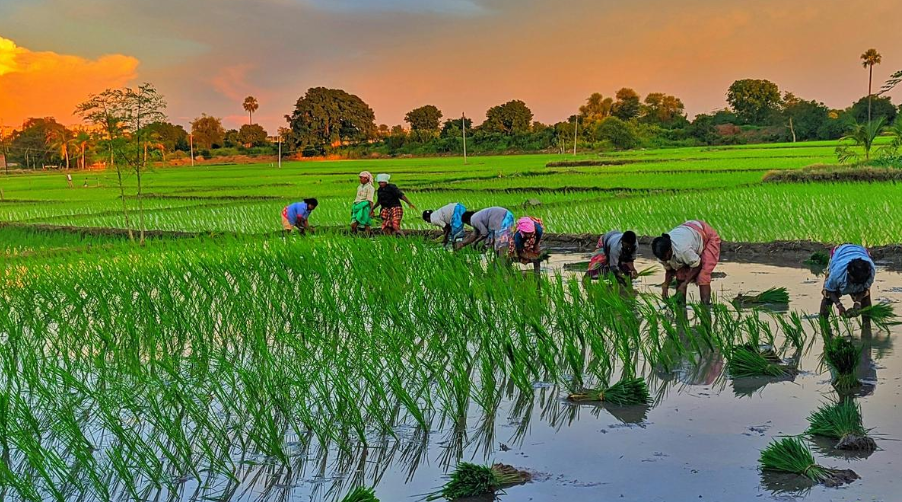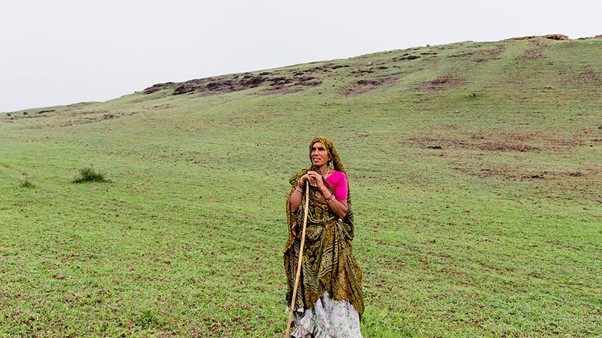



Arsenic contamination in rice paddies, driven by groundwater irrigation and microbial imbalance, reduces yield through straighthead disease and accumulation of toxic compounds (DMA, DMMTA). India’s newly reclaimed paddies are most vulnerable, especially in West Bengal, Bihar, and Assam, while older soils show lower risk due to demethylating microbes. Chronic arsenic exposure threatens food safety and public health. Mitigation strategies include alternate wetting and drying (AWD) irrigation, mid-season drainage, silicon fertilisation, and low-arsenic rice varieties. Policy measures must integrate arsenic-speciation monitoring and align with Codex/WHO standards to safeguard rice yield, nutrition, and economic stability.

Copyright infringement not intended
Picture Courtesy: The Hindu
A recent study published in the Proceedings of the National Academy of Sciences (PNAS) has revealed that the microbial composition of rice paddies—not just the amount of arsenic in soil—plays a decisive role in arsenic toxicity and yield loss in rice. The research suggests that managing soil microbes could be key to ensuring rice productivity and food safety.
Global: Around 150 million people are exposed to arsenic-contaminated rice worldwide. Arsenic toxicity can cause up to 70% yield loss in severely affected fields due to straight head disease. (Source: WHO, FAO, PNAS 2025)
India: India is the 2nd largest rice producer, with 45 million hectares under cultivation.
These findings indicate that in India:
|
Country/Region |
Regulation of Arsenic in Rice |
Available Data on Rice Arsenic |
Notes & Sources |
|
European Union (EU) |
Inorganic arsenic: 0.15 mg/kg for non-parboiled milled rice; 0.25 mg/kg for parboiled/husked rice. (Sources: DigiComply) |
Many rice samples in Europe below these limits; origin data show average arsenic levels from major-origin countries such as India, Thailand below limits. (Sources: riceassociation.org.uk) |
Among the strictest global standards. |
|
China |
Sets inorganic arsenic limit for rice at 0.15 mg/kg. |
Rice contamination varies; some regions report high values. |
Strong regulatory standard. |
|
India |
No specific national standard for arsenic in rice; follows generic food safety rules. (Sources: Down To Earth) |
Studies show rice grains in arsenic-hotspots contain higher levels (e.g., West Bengal rice grains up to ~0.446 mg/kg in one study) (Sources: PubMed) |
Regulatory gap + significant hotspot contamination. |
|
Bangladesh |
No formal national maximum limit for arsenic in rice documented. (Sources: SpringerLink) |
Soil and irrigation arsenic high; rice grains also show elevated arsenic though explicit national data limited. (Sources: PubMed) |
High exposure risk due to groundwater arsenic + rice staple diet. |
|
United States |
No established regulatory limit for arsenic in rice by U.S. Food & Drug Administration (FDA) as of current data. (Sources: TIME) |
Studies report high arsenic levels in US-grown rice (especially southern states) compared with some imported rice. (Sources: Business Standard) |
Regulatory standard absent; contamination variability across states. |
Source: The Hindu
|
Practice Question Q. “Arsenic contamination in Indian rice paddies poses multidimensional challenges for agriculture, health, and economy.” Discuss (150 words) |
Mainly arsenic-rich groundwater irrigation, contaminated soil, and dominance of arsenic-methylating microbes.
It leads to straighthead disease, empty grains, reduced panicle weight, and lower grain filling. Yield loss ranges 15–70% depending on severity.
Alternate Wetting & Drying (AWD) irrigation, silicon fertilisation, mid-season drainage, and growing low-arsenic rice varieties.







© 2025 iasgyan. All right reserved